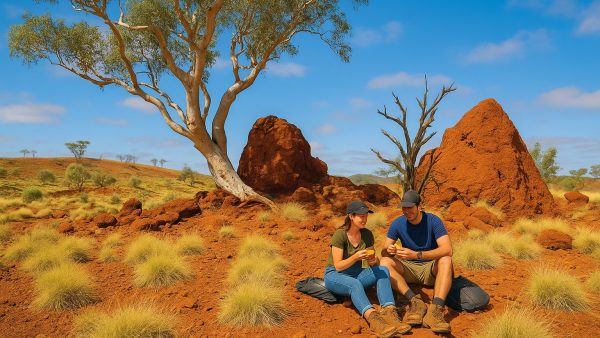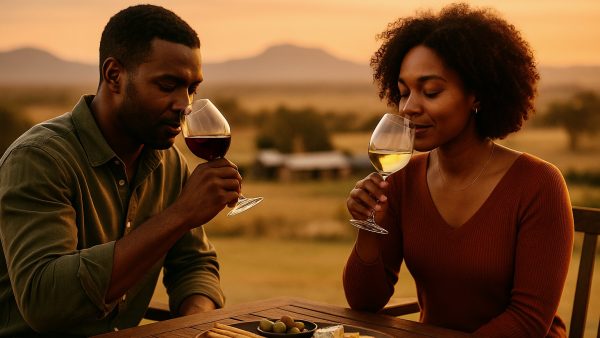The ultimate seasonal guide to Western Australia travel
Western Australia isn’t just big — it’s colossal. Bigger than Texas and more diverse than most countries, it covers everything from tropical reefs and wildflower fields to red desert and urban chic.
But while WA is an all-year-round destination, where you go — and when — can make or break your trip. This state’s seasons aren’t uniform. What’s blistering in the north might be perfect in the south.
Here’s how the year breaks down for visitors who want to see WA at its best, whatever their interest.
Summer (December to February)
Best for: Beach holidays, snorkelling, Margaret River wineries (early summer)
Summer in Western Australia is split down the middle — literally. In the southwest, it’s hot, dry, and sunny. Perfect for soaking up the beaches from Esperance to Margaret River. This is peak holiday time for locals, so expect crowds around Christmas and early January. Book well ahead if you’re eyeing Yallingup, Dunsborough, or Albany.
The south coast shines for coastal walks, with long daylight hours and cooler evenings ideal for strolling the Bibbulmun Track or Cape to Cape. It’s also grape-picking time in the Margaret River region, and early season cellar door tastings are buzzing.
Avoid the north (like Broome or Karijini) unless you like sweating. The Top End is in its wet season — hot, sticky, and storm-prone — with road closures and humidity that’ll knock you sideways.
Autumn (March to May)
Best for: Road trips, food and wine, city breaks, desert travel
Autumn in WA is a beauty, particularly from mid-March onwards. The heat begins to ease, making it one of the best times to hit the road — especially across the Golden Outback, Gascoyne, or the Wheatbelt. It’s also a sweet spot for a Perth city break: the weather’s warm without being oppressive, and the city comes alive with events like Perth Festival and Sculpture by the Sea at Cottesloe.
Margaret River and the southwest still enjoy good weather and fewer crowds. It’s the perfect shoulder season for cellar door touring, forest walks, and paddock-to-plate experiences.
By May, the northern regions begin to open back up. Broome, the Kimberley, and Coral Coast start shaking off the wet season, and prices are still reasonable before peak winter.
Winter (June to August)
Best for: The Kimberley, whale watching, wildflowers starting, stargazing
In WA, winter is when the north takes the spotlight. This is the time to explore Broome, Karijini, the Gibb River Road, and El Questro. The rain’s gone, the skies are crisp, and waterfalls still run in the remote gorges. Temperatures hover around 28°C — a far cry from the southern chill.
If you’re into whale watching, the season kicks off in June along the southern coast. Albany and Augusta are prime spots, with thousands of humpbacks and southern right whales making their annual migration.
Back in the southwest, it’s wetter and colder, but that makes it ideal for cosy vineyard escapes. Think crackling fires, truffle hunts in Manjimup, and rich reds at cellar doors in Pemberton and Denmark.
It’s also the start of wildflower season in the north. Pilbara and Coral Coast bloom first — a carpet of pinks, yellows, and purples that’ll floor you.
Spring (September to November)
Best for: Wildflowers, hiking, photography, outdoor adventure
If there’s a standout season in WA, it’s spring. From September to mid-November, the state explodes into colour. WA’s wildflower season is world famous — more than 12,000 species bloom, with over 60% found nowhere else on Earth. Head to Kalbarri, Everlastings Trail, Fitzgerald River National Park, or even the outskirts of Perth for vivid floral displays.
This is also peak time for hiking and outdoor adventure. Trails like the Cape to Cape, Stirling Range Ridge Walk, and Lesueur National Park are in their prime. The weather’s mild, days are long, and everything smells alive.
Spring is also a great time to visit Rottnest Island, with fewer tourists than summer and quokkas still happy to pose for selfies. And down south, it’s festival time again — food, wine, and art events fill calendars in Margaret River, Denmark, and even Fremantle.
If you’re planning a self-drive holiday, now’s the time. From wildflowers to wineries, the whole state’s open for business.
Final word: When’s best overall?
For flexibility, comfort, and bang for your buck, autumn (March to May) and spring (September to November) are your best bets. Summer is great for the southwest and beaches, while winter belongs to the north. Pick your region, match it to the season, and you’ll see WA the way it deserves to be seen — untamed, unforgettable, and always changing.
- Explore the amazing outback
- Make new family memories
- Making memories that will last long after you return home
Practical Information
- Getting there: Major airlines fly into Perth. Broome, Kalgoorlie, Karratha, and Albany also have regional airports.
- Getting around: WA is best explored by car or 4WD for remote regions. Long distances mean plan fuel stops carefully.
- Dress code: Lightweight clothes for north; layers and waterproofs for the south in winter. Good hiking boots essential if bushwalking.
- Opening times: National parks are mostly open year-round, but some attractions in the north close during the wet season.
- Best times to visit:
– Southwest: September–April
– Kimberley & Top End: May–September
– Outback: March–May or August–October - Safety tips:
– Carry water — lots of it.
– Check road conditions, especially off sealed roads.
– Wildlife is most active at dawn and dusk — take care when driving.
More Information
- Explore WA National Parks
Plan your outdoor adventures with park alerts, passes, and trail info - WA Visitor Centre
Official tourism information for trip planning - Broome Visitor Centre
Essential travel and seasonal tips for the Kimberley - Margaret River Wine Region
Find cellar doors, accommodation and events - Wildflower Country WA
Track the bloom across regions





Leave A Comment